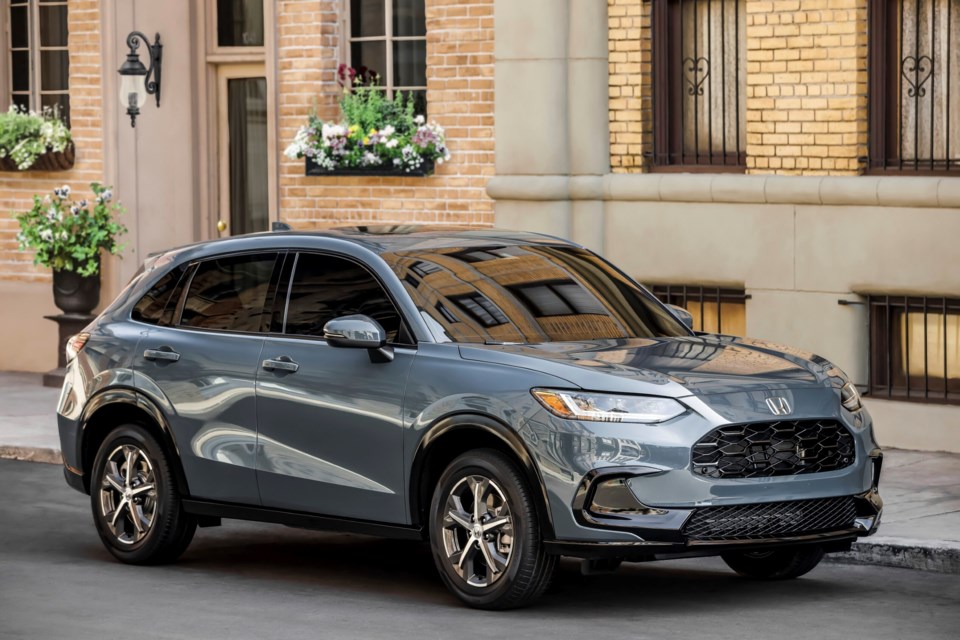Chevrolet originally launched its Trax extra-small crossover SUV for the 2015 model year. It was inexpensive, yes, but that was just about the only compelling aspect about it. However, the new kicks off the model’s second generation. The nameplate has undergone an astonishing transformation, going from a frumpy-looking hatchback on stilts to a sleek head-turner.
But good looks alone don’t sell cars, and the Trax also needs to appeal to shoppers who favor space, feature content and value. One of the Trax’s biggest competitors is the , which also recently entered its second generation. Does the redesigned Chevy have what it takes to challenge a class stalwart? The auto experts at compare the two to find out which is the better buy.
DRIVING AND COMFORT
All 2024 Chevy Trax models get a new turbocharged 1.2-liter three-cylinder engine paired to a six-speed automatic transmission. You might think that means acceleration will be leisurely, but it’s actually not bad for the class. Zero to 60 mph took 9.1 seconds in Edmunds’ testing. That’s by no means fast but still quicker than the HR-V, which packs a 2.0-liter four-cylinder engine and took more than 10 seconds to reach the same speed.
When it comes to handling, both SUVs perform similarly well and change direction quickly and predictably. They also ride pretty comfortably over bumps and ruts in the road. The HR-V is slightly better at shutting out wind and road noise, though you’ll still hear some at higher speeds. But the Honda falls short in the seat comfort department, with stiff front buckets with overly firm cushions. The Trax’s front seats are flat, offering little support when taking corners, but they’re nicely padded and comfortable for long drives.
Winner: Trax
INTERIOR AND CARGO SPACE
Chevy didn’t need to make the interior of its least expensive vehicle attractive, but it went above and beyond the call of duty, giving the Trax a cabin that looks and feels like one from a more expensive car. The controls are laid out intuitively, and the standard 8-inch and available 11-inch touchscreens are big and easy to use. The Trax is roomy, too. There’s enough legroom and headroom for adults in the back seat, and cargo volume stands at an impressive 25.6 cubic feet, which is more than just about every other entry in the category. Storage throughout the rest of the car isn’t bad either, though there’s a conspicuous lack of cupholders or air vents for rear passengers.
The interior in the HR-V is similarly chic and upscale for a subcompact crossover. The touchscreens are smaller — there’s a standard 7-inch touchscreen or optional 9-inch screen — but they’re easy to navigate, and all the controls are arranged thoughtfully. The cabin is also spacious, offering a surprising amount of room in both rows. Cargo space comes in slightly below the Trax at 24.4 cubic feet, but storage for small items is a little better. There are door pockets that can accommodate water bottles and a center console compartment that’s good for stowing your smartphone. You also get cupholders for your rear passengers’ drinks, though rear air vents aren’t available here either.
Winner: tie
FEATURES AND VALUE
Both vehicles come with an interior that’s nicer than you’d expect from an extra-small SUV, but the Trax is remarkable for offering that interior at such a low price point. Including destination, the Trax starts at $21,495 for a base LS trim, more than $4,400 less than the cheapest Honda HR-V, which starts at $25,950. Trax buyers will miss out on all-wheel drive, which isn’t offered as an option, but they get a better powertrain than the anemic four-cylinder found in the HR-V.
The standard and available advanced driver aids are also a little better in the Trax. Edmunds found the Chevy’s adaptive cruise control easy to operate, and the system kept up with traffic without leaving a large gap between the car in front. The HR-V’s adaptive cruise control, on the other hand, was slow to accelerate and too eager to stop. The blind-spot warning system also issued alerts when vehicles in the next lane weren’t particularly close.
Neither car offers onboard navigation, relying instead on smartphone integration for that task. The Trax has a slight technology edge as it comes with bigger touchscreens plus standard wireless connectivity for Apple CarPlay and Android Auto smartphone integration — Honda only adds wireless connectivity to the top HR-V trim level.
Winner: Trax
EDMUNDS SAYS
The Chevy Trax is a compelling small crossover that goes big on interior quality, space and value. Honda’s HR-V does little wrong but it’s been upstaged in this contest. The Trax is the better buy.
_____
This story was provided to by the automotive website . is a contributor at Edmunds.
Alex Nishimoto, The Associated Press



